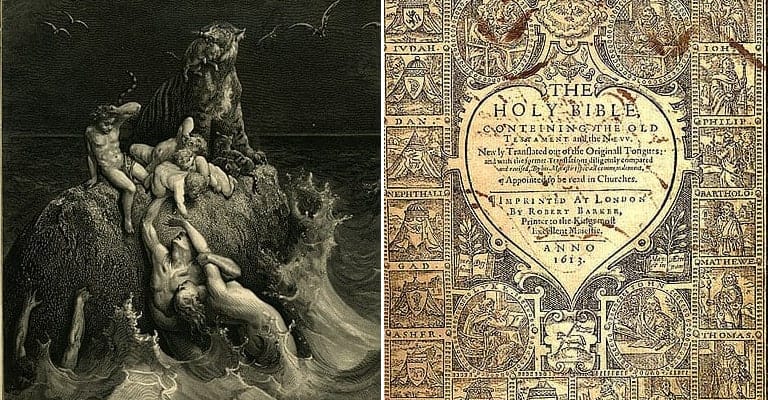One of the many conspiracy theories currently being foisted by those so inclined is that CERN – the European Organization for Nuclear Research (Conseil European pour la recherché nucleaire) – is generating through supernatural means changes to the King James Version, as well as other versions, of the Bible. Precisely what these changes are and how they are accomplished is unclear, but there are those who believe that printed copies of their own personal bibles have been altered, through a concept which some call the Mandela Effect. For those who subscribe to the theory, it is the printed word, rather than their own memories, which have changed.

Be that as it may, the Bible, both before and after the 1611 edition of the King James Version – its first printing – has changed many times. The KJV has also been changed, revised in matters of text, punctuation, and content. There are those of course who deny that is possible, but it is nonetheless historical fact. For example, in 1611 when the first edition of the KJV appeared the English alphabet did not contain the letter j, and the name of Jesus was rendered Iesus, with subsequent editions later changing it to the more modern appearance. J did not appear as distinct from I in the English language until 1633. Here are other examples of how the Bible has changed over time, none of them related to CERN and its research into particle physics.

1. Early editions of the KJV were filled with typographical discrepancies
About 200 editions of what are known as the Great He Bibles are known to exist in the 21st century. The Bibles contain title pages for both Testaments which are dated 1611. Though in some instances the actual books of the Old Testament were printed in 1613. More than 350 typographical errors appear in the text, one of the most famous being in the Book of Ruth. In those in which the Old Testament was printed in 1611, in the book of Ruth, the test reads, in reference to Boaz, “he measured sixe measures of barley and laide it on her, and he went into the citie” (Ruth 3.15). The second use of the pronoun he is incorrect; it refers to Ruth going into the city, rather than Boaz, and should have read she. Editions printed in 1613 corrected the error.
The two editions are known as the Great He Bibles for those which indicate Boaz went into the city, and the Great She Bibles for those which have Ruth making the journey. According to some Hebrew scholars, the error is not typographical at all, they cite that the original Hebrew text translates as he, and the translators, in order to change the context of the passage to place Ruth in the city, as the story seems to require, deliberately changed the pronoun in the Bishop’s Bible, which preceded the KJV. So whether Ruth or Boaz entered the city is the subject of debate among Bible scholars, a controversy which begins with the first and second editions of the King James Version of the Hebrew Bible, in which the text was clearly changed, whether deliberately or not.

